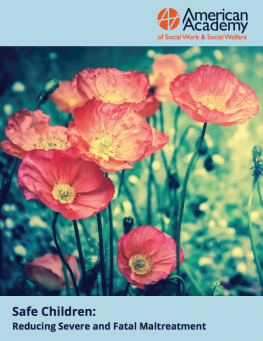
Reducing severe and fatal maltreatment is achievable through an array of methods that are not now consistently, widely, or optimally delivered, or which need to be developed. This paper describes the benefits to children, parents, and society from reducing child maltreatment morbidity and mortality. Mechanisms for achieving a significant improvement—a 50% reduction—in child maltreatment over the next decade are presented. These include implementation of birth match; expansion of safe haven laws; and improved integration of data on birth records, child-welfare involvement, and fatalities. Also included are case reviews that look at severe and fatal maltreatment, the characteristics of the workforce, the conceptualization of the case, and the family. Targets for improvement are identified so that progress toward significant reductions in severe and fatal maltreatment can be ascertained.
Authored by: Richard P. Barth, Emily Putnam-Hornstein, Terry V. Shaw, and Nancy S. Dickinson